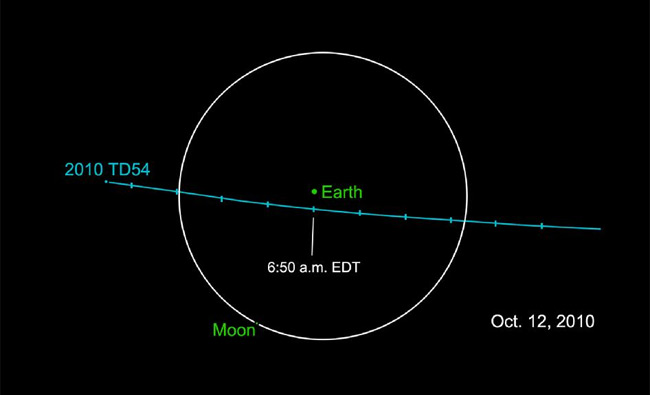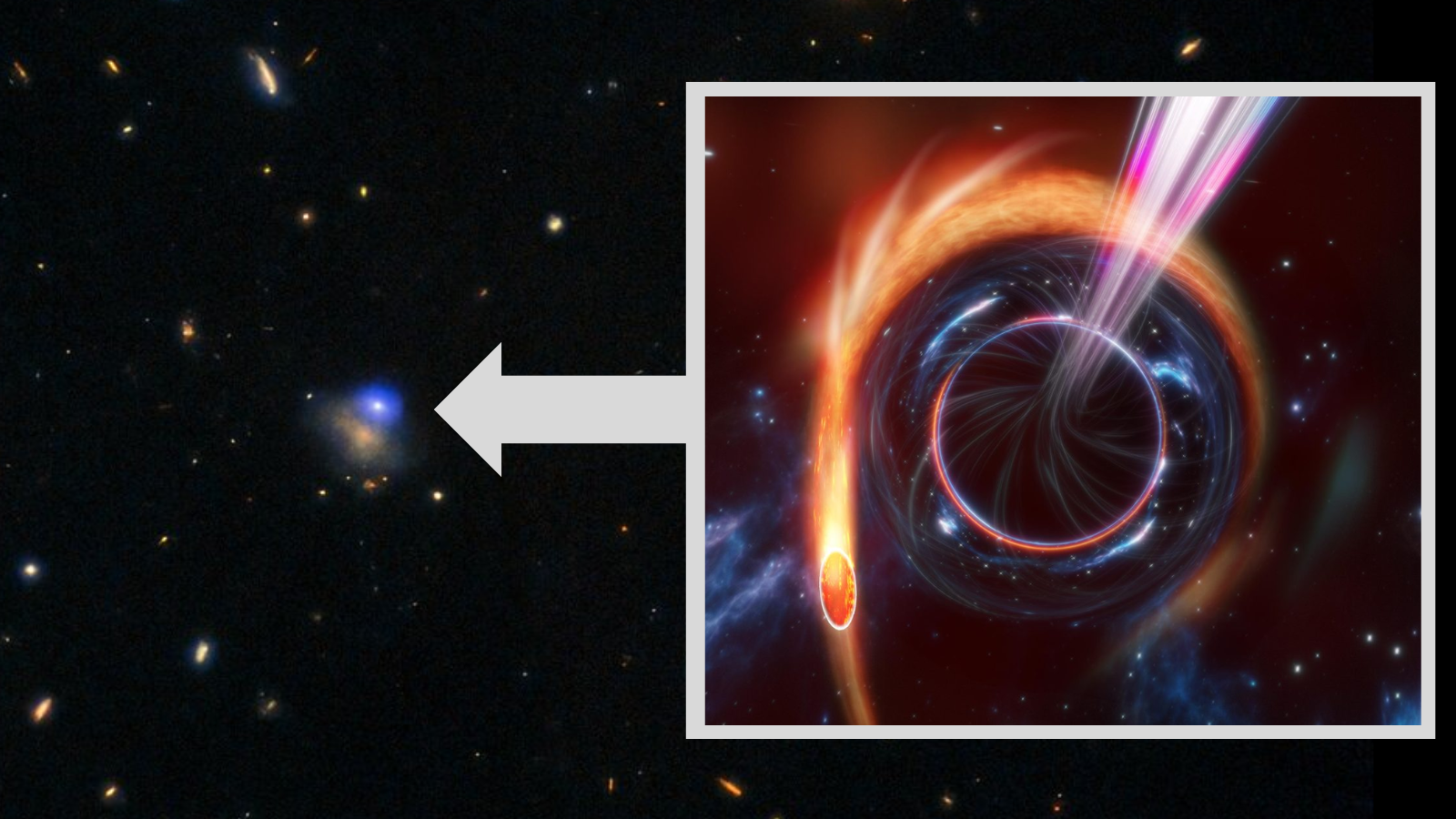Small Asteroid to Buzz Earth Tuesday

Thisstory was updated at 6:09 p.m. ET.
Asmall asteroid will zip close by Earth Tuesday (Oct. 12), but poses no chanceof hitting the planet ? or even entering the atmosphere, NASA has announced.
Theasteroid 2010 TD54 will fly within about 28,000 miles (45,000 km) of Earth whenit makes its closest pass at about 6:51 a.m. EDT(1051 GMT) tomorrow morning, NASA spokesman D.C. Agle told SPACE.com. Itbe passing over southeast Asia, near Singapore, at the time.
The small asteroid is about20 feet (6 meters) wide and expected to drift silently by Earth instead ofcreating a dazzling fireball in the atmosphere. The asteroid is too small tosurvive all the way to the ground, even if it was aimed at Earth, scientistssaid.
This NASA space map shows the asteroid's path near Earth onTuesday.
"Small space rocks this size would burn up in our atmosphere& pose no ground danger," NASA's Asteroid Watch group posted onTwitter. [Video: MeteorFireball Caught on Camera]
Asteroid Watch is a public outreach effort by NASA's near-Earth objects officeat the Jet Propulsion Laboratory in Pasadena, Calif. The group of scientistsregularly posts asteroid flyby and sighting alerts on Twitter under the nameAsteroidWatch.
Breaking space news, the latest updates on rocket launches, skywatching events and more!
Asteroid2010 TD54 may be visible to skywatchers with moderatetelescopes, but will be hard to spot, NASA officials said. Seasoned asteroidhunters may be the best equipped to catch a glimpse, they added.
"A moderate telescope required; it is very small," theAsteroid Watch group wrote on Twitter.
The asteroid will fly well inside the moon's orbit of Earth, andeven pass just above some of the highest satellites, which fly in geostationarypositions about 22,370 miles (36,000 km) above Earth. For comparison, theInternational Space Station flies at an altitude of about 220 miles (354 km).
When space rocks like Asteroid 2010 TD54 encounter Earth'satmosphere, they can burn up in spectacular fire balls, but never reach theEarth.
Biggerasteroids about 460 feet (140 meters) wide can cause widespread damage aroundtheir impact sites, but for global devastation much larger space rocks wouldhave to strike the Earth.
NASAroutinely tracks asteroids and comets that fly near Earth, using a network ofground and space telescopes as part of its Near-Earth Object Observationsprogram. According to the most recent report, the program has tracked 85percent of the largest asteroids that fly near Earth and 15 percent ofasteroids in the 460-foot class.
NASAis also planning to tackle a new space plan ordered by President Obama to send astronauts to anasteroidby 2025. The mission, agency officials have said, could help scientists betterunderstand the composition of asteroids and develop improved methods ofdeflecting them before they endanger the Earth.
- Video: Brilliant Fireball Over New Mexico Caught on Camera
- 5 Reasons to Care About Asteroids
- Forget Big Asteroids: It's the Smaller Rocks That Sneak In and Blow Up
SPACE.comSenior Writer Clara Moskowitz contributed to this report. This story has been updated to reflect the asteroid's designation as 2010 TD54.

Tariq is the award-winning Editor-in-Chief of Space.com and joined the team in 2001. He covers human spaceflight, as well as skywatching and entertainment. He became Space.com's Editor-in-Chief in 2019. Before joining Space.com, Tariq was a staff reporter for The Los Angeles Times covering education and city beats in La Habra, Fullerton and Huntington Beach. He's a recipient of the 2022 Harry Kolcum Award for excellence in space reporting and the 2025 Space Pioneer Award from the National Space Society. He is an Eagle Scout and Space Camp alum with journalism degrees from the USC and NYU. You can find Tariq at Space.com and as the co-host to the This Week In Space podcast on the TWiT network. To see his latest project, you can follow Tariq on Twitter @tariqjmalik.
